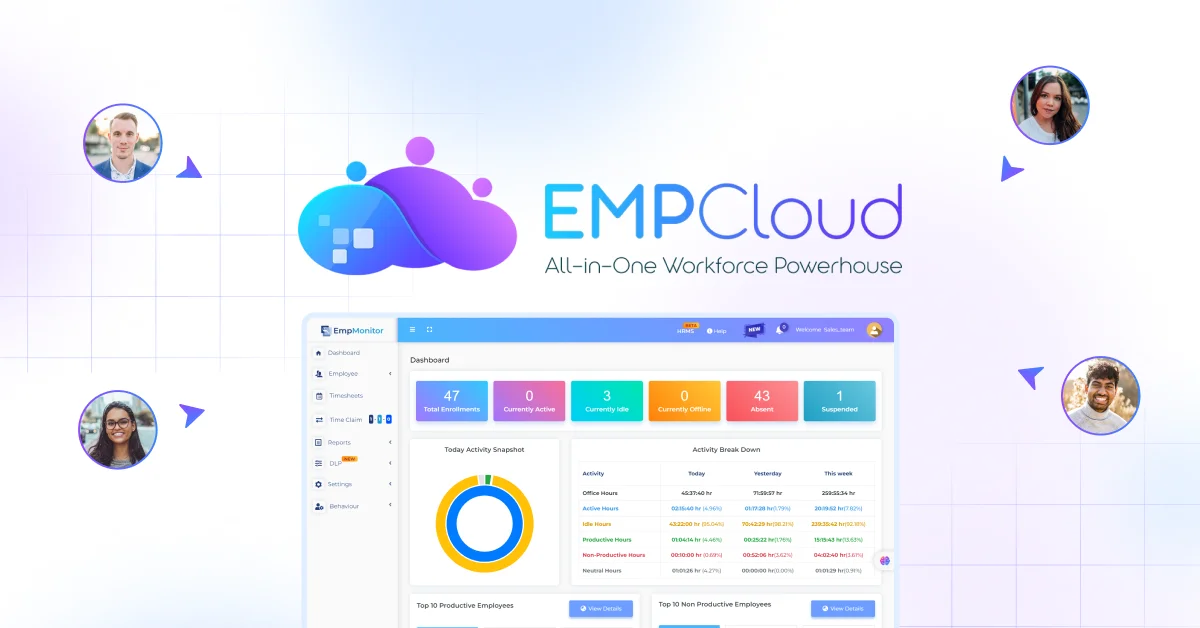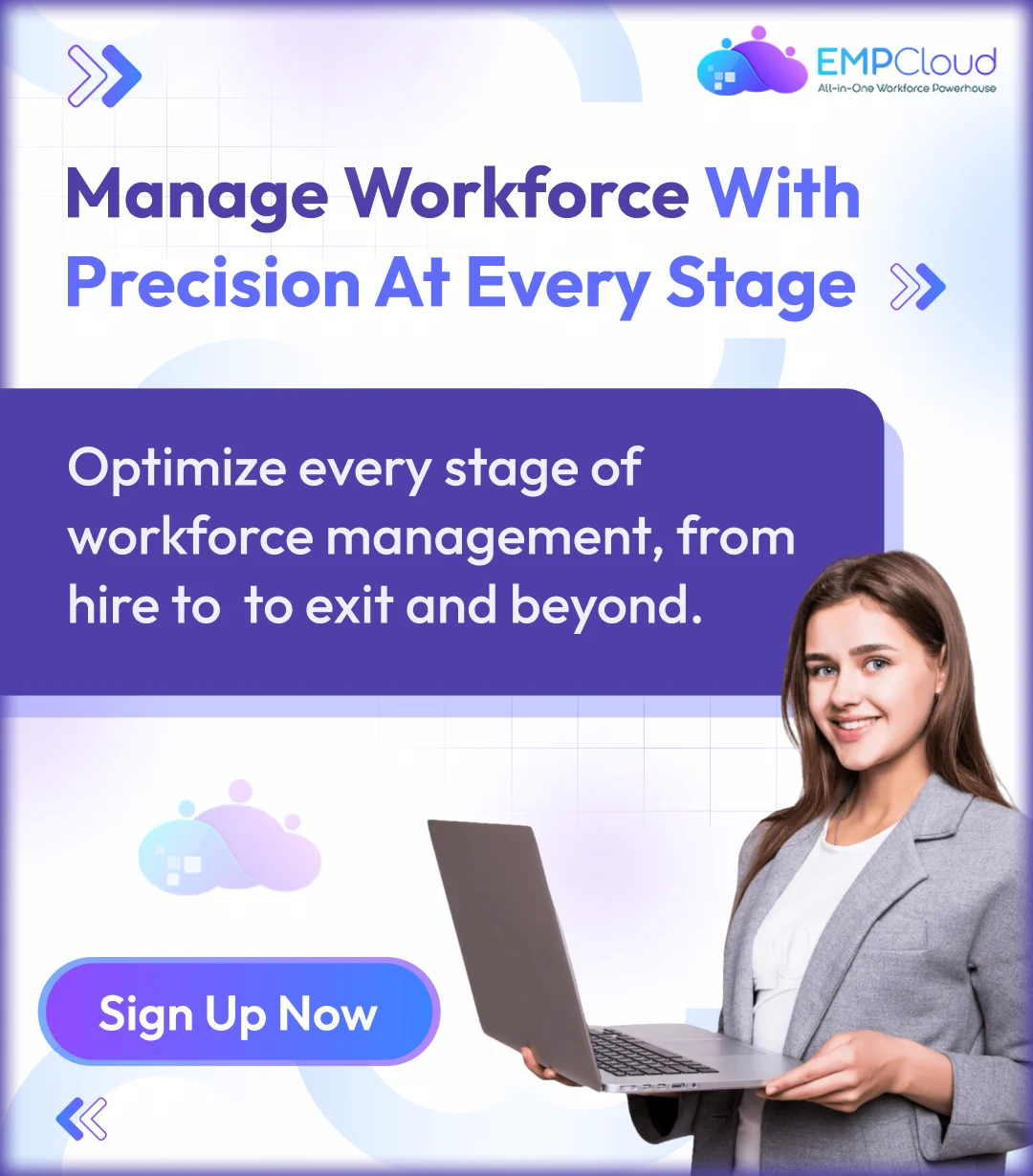
The traditional 9-to-5 office grind is fading fast. In 2025, 67% of job seekers say they’d reject a role that lacks flexibility, even if the salary is high. What’s driving this shift? Employees no longer want to adapt to rigid workplaces; they expect workplaces to adapt to them. It isn’t a trend. It’s a transformation. Companies that embrace a flexible work environment are seeing sharper talent retention, happier teams, and a 20% spike in productivity. But how do you design flexibility that works, without chaos? Let’s explore actionable strategies, real-world success stories, and tools to make it happen.
In a hurry? Listen to the blog instead!
Why Flexibility Is The Foundation Of Modern Work?
The pandemic didn’t just change where we work; it completely reshaped what employees value most in their professional lives. A recent Gartner study revealed that 75% of workers now prioritize a flexible schedule over a traditional promotion. It’s easy to see why over time improves mental health, reduces burnout, and builds a stronger sense of ownership and loyalty to work.
Today, flexible work is no longer seen as an optional perk but as an essential part of a thriving work environment. Flexible work benefits both employees and employers alike. Teams following a hybrid work schedule see measurable benefits. According to McKinsey, companies with flexible cultures report 30% fewer sick days and 18% more revenue per employee.
Offering a hybrid work schedule allows businesses to attract top-tier talent who prioritize balance and well-being. In this new era, organizations that invest in flexible work models position themselves to outperform those sticking to rigid structures. Flexibility is essential for modern work, driving productivity, innovation, and long-term success for individuals and organizations.
Six Flexible Work Models That Drive Results
 Here are six flexible word models that drive results:
Here are six flexible word models that drive results:
1. Remote Work: More Than Just A Home Office
Remote work has evolved from a pandemic stopgap to a permanent fixture. Companies like Shopify and GitLab operate without physical offices, relying on asynchronous communication and digital collaboration.
- Key Benefit: Access to global talent.
- Challenge: Maintaining team cohesion.
- Fix: Quarterly in-person meetups + tools like EmpCloud for seamless task tracking.
Hybrid models blend the best remote and in-office work—let’s explore how a flexible work environment bridges both worlds.
2. Hybrid Work Schedules: Structure Meets Freedom
A hybrid work schedule isn’t about forcing days in the office—it’s about intentional collaboration. Take Adobe’s approach: Teams decide which days to gather for brainstorming, while solo tasks happen remotely.
- Pro Tip: Use office days for workshops, not routine meetings.
- Stat: 58% of hybrid employees feel more engaged than fully remote peers (Gallup).
Can fewer hours lead to better output? The four-day workweek says yes, and strengthens your flexible work environment.
3. The Four-Day Workweek: Less Time, More Focus
Companies like Kickstarter and Buffer have slashed hours without cutting pay—and productivity soared. The secret? Eliminating low-value tasks and protecting “deep work” time.
- Result: 71% of employees report lower stress (4 Day Week Global).
- Keyword Tie-In: A flexible work environment thrives on quality, not clock-watching.
What if employees could set their hours? Enter flextime, another pillar of modern flexibility.
4. Flextime: Work When You’re at Your Best
Early riser? Night owl? Flextime lets employees align work with their energy peaks. Siemens uses AI to recommend personalized, flexible schedules based on performance data.
- Example: A parent starts at 7 AM to finish by 3 PM for school pickups.
- Outcome: 22% fewer missed deadlines (Harvard Business Review).
But how do you measure success without micromanaging? ROWE has answers and redefines the flexible work environment.
5. Results-Only Work (ROWE): Trust Over Tracking
In a ROWE model, employees are judged on outcomes, not hours logged or meetings attended. Atlassian’s “Team Anywhere” policy has boosted innovation, with engineers reporting 40% faster project delivery.
- Keyword Alert: This flexible work approach dismantles the “presenteeism” culture.
Finally, let’s examine the myth of unlimited PTO versus reality and how it complements a flexible work environment.
6. Unlimited PTO: Balancing Freedom and Accountability
The unlimited paid time off model represents a paradigm shift in workplace culture, replacing rigid vacation policies with mutual trust and responsibility. This approach allows employees to take time off while maintaining clear performance expectations and deliverables.
Research highlights the tangible benefits of this progressive policy:
- Organizations report 42% lower turnover rates compared to traditional vacation structures (SHRM)
- Employees experience 31% higher job satisfaction levels
- Companies see 27% improvements in productivity metrics
For optimal implementation, organizations should establish:
- Transparent performance benchmarks tied to PTO usage
- Leadership modeling of healthy time-off practices
- Regular audits to ensure equitable utilization across teams
The most successful unlimited PTO policies create organizational cultures where rest is recognized as essential to sustained performance. These companies understand that strategic time away from work fuels innovation and prevents burnout.
Navigate Flexibility’s Pain Points
 While flexible work models deliver undeniable benefits, they also introduce unique operational challenges. Organizations transitioning to these progressive arrangements often encounter three common hurdles that can undermine their success if left unaddressed.
While flexible work models deliver undeniable benefits, they also introduce unique operational challenges. Organizations transitioning to these progressive arrangements often encounter three common hurdles that can undermine their success if left unaddressed.
Challenge 1: Maintaining Visibility Without Micromanagement
“How do we track productivity without creating a surveillance culture?”
Solution: Implement privacy-focused remote employee monitoring tools that emphasize outcomes over activity. Platforms like EmpCloud provide intelligent dashboards that highlight work patterns and productivity trends without invasive screenshots, fostering trust while maintaining accountability.
Challenge 2: Creating Cohesion in Hybrid Teams
“Our hybrid work schedule feels fragmented and inconsistent.”
Fix: Establish standardized “core hours” when all team members are available for collaboration, using asynchronous communication for other updates. It balances real-time interaction with focused work time, preventing the chaos of constant availability expectations.
Challenge 3: Preventing Flexibility-Induced Burnout
“Even with unlimited PTO, our team isn’t taking enough time off.”
Preventive Step: Combine policy with proactive measures—mandate minimum vacation days in unlimited PTO programs and train managers to recognize and address burnout signals. Regular wellness check-ins can ensure employees utilize their flexibility benefits.
These solutions demonstrate that operational challenges shouldn’t deter organizations from embracing workplace flexibility. With tools like EmpCloud’s workforce management suite, companies can sustain a flexible work environment that works for the business and its people.
EmpCloud: The Smarter Way to Manage Your Workforce
 EmpCloud redefines workforce management with an intelligent, all-in-one platform that supports your team at every stage of the employee lifecycle — from hiring to exit. Designed for today’s dynamic work environments, EmpCloud combines powerful tools with intuitive design to make managing people simple and effective. Whether it’s streamlining recruitment and onboarding, coordinating hybrid schedules, tracking performance and development, or ensuring smooth offboarding, EmpCloud delivers a complete workforce management suite that adapts to your business needs while empowering your employees to thrive.
EmpCloud redefines workforce management with an intelligent, all-in-one platform that supports your team at every stage of the employee lifecycle — from hiring to exit. Designed for today’s dynamic work environments, EmpCloud combines powerful tools with intuitive design to make managing people simple and effective. Whether it’s streamlining recruitment and onboarding, coordinating hybrid schedules, tracking performance and development, or ensuring smooth offboarding, EmpCloud delivers a complete workforce management suite that adapts to your business needs while empowering your employees to thrive.
5 Essential Features:
Ethical Remote Employee Monitoring
Gain valuable productivity insights while respecting employee privacy through discreet analytics and activity trends.
Hybrid Workforce Coordination
Effortlessly manage schedules and workspace allocation for teams, splitting time between office and remote locations.
Integrated HR Management
Handle all HR processes from attendance to compliance through a single, automated dashboard.
Performance Development Tools
Track employee growth with continuous feedback systems and skill development tracking.
Mobile Workforce Optimization
Manage field operations efficiently with location-aware dispatching and real-time job tracking.
EmpCloud gives you what modern workforce management should be – simple, smart, and adaptable. It’s not about watching clocks or tracking keystrokes. It’s about giving teams the tools to do their best work, whether in the office, at home, or in the field.
Read More
Master Workforce Management In 2025 Like Never Before!
Conclusion
The workplace transformation we’re witnessing isn’t temporary—it’s the new foundation of how successful businesses operate. Organizations that fully embrace a flexible work environment outperform competitors, with measurable gains in productivity, employee satisfaction, and talent retention.
Creating an effective flexible work environment requires more than policy changes—it demands a cultural shift toward trust-based management, results-oriented evaluation, and smart technology adoption. The companies leading this charge understand that flexibility isn’t just about location, but about reimagining how work gets done.
As we move forward, one truth becomes undeniable: the flexible work environment is no longer an innovation, but an expectation. Businesses that recognize this reality today will be the industry leaders of tomorrow.
The question isn’t whether to adopt flexibility, but how to implement it strategically. Solutions like EmpCloud’s complete workforce management suite make it easier to design and sustain a flexible, high-performing workplace. For actionable insights on building your ideal workplace model, explore our guide to successful flexible work implementation. The future of work is here—is your organization prepared to meet it?
Frequently Asked Questions
1. What’s the biggest mistake companies make when introducing workplace flexibility?
One common mistake is offering flexibility without clear guidelines or expectations. Without defined policies, employees may feel uncertain about what’s acceptable, leading to inconsistency and even burnout. Successful flexibility depends on communication and structure alongside freedom.
2. How does flexibility impact leadership and management styles?
Flexibility often requires managers to shift from task-based supervision to outcome-based leadership. This means focusing less on when and where work happens, and more on results and team well-being. Training managers to adapt their style is key to making flexibility work.
3. Are flexible work environments suitable for all industries?
Not all roles or industries can support full remote or hybrid models—manufacturing, healthcare, and logistics, for example, often require physical presence. However, even in these fields, elements like flextime, shift swaps, and PTO policies can introduce flexibility where possible.
4. How can companies measure the ROI of a flexible work environment?
ROI can be measured by tracking metrics such as employee retention, engagement scores, absenteeism rates, productivity, and recruitment costs. Many companies find that investments in flexibility quickly pay off through lower turnover and higher performance.
5. What role does workforce management software play in supporting flexibility?
Workforce management software provides the infrastructure to plan, track, and optimize a flexible workplace. It helps businesses coordinate hybrid teams, monitor performance ethically, manage schedules, and analyze trends—ensuring flexibility benefits both the organization and its people.


